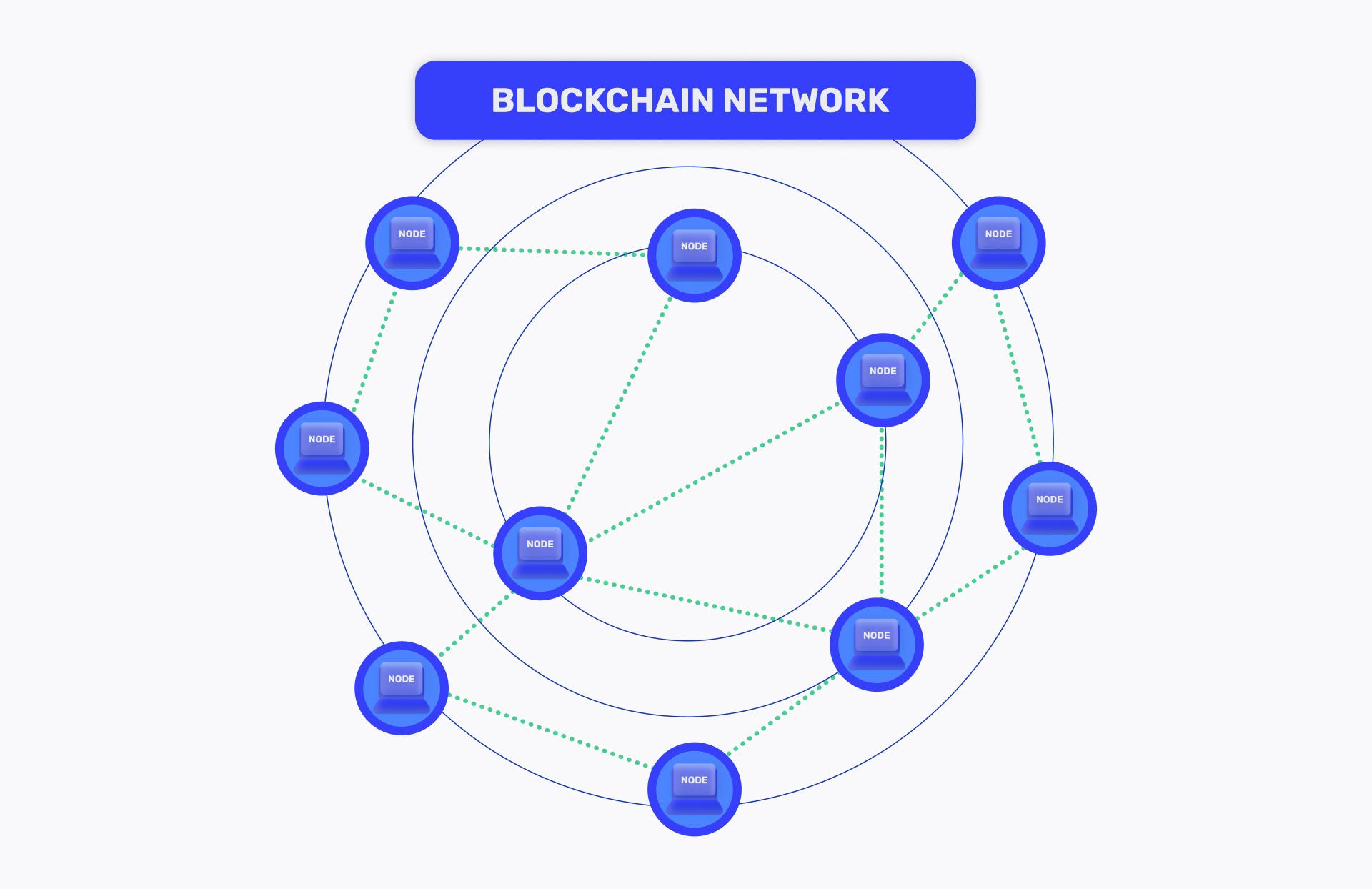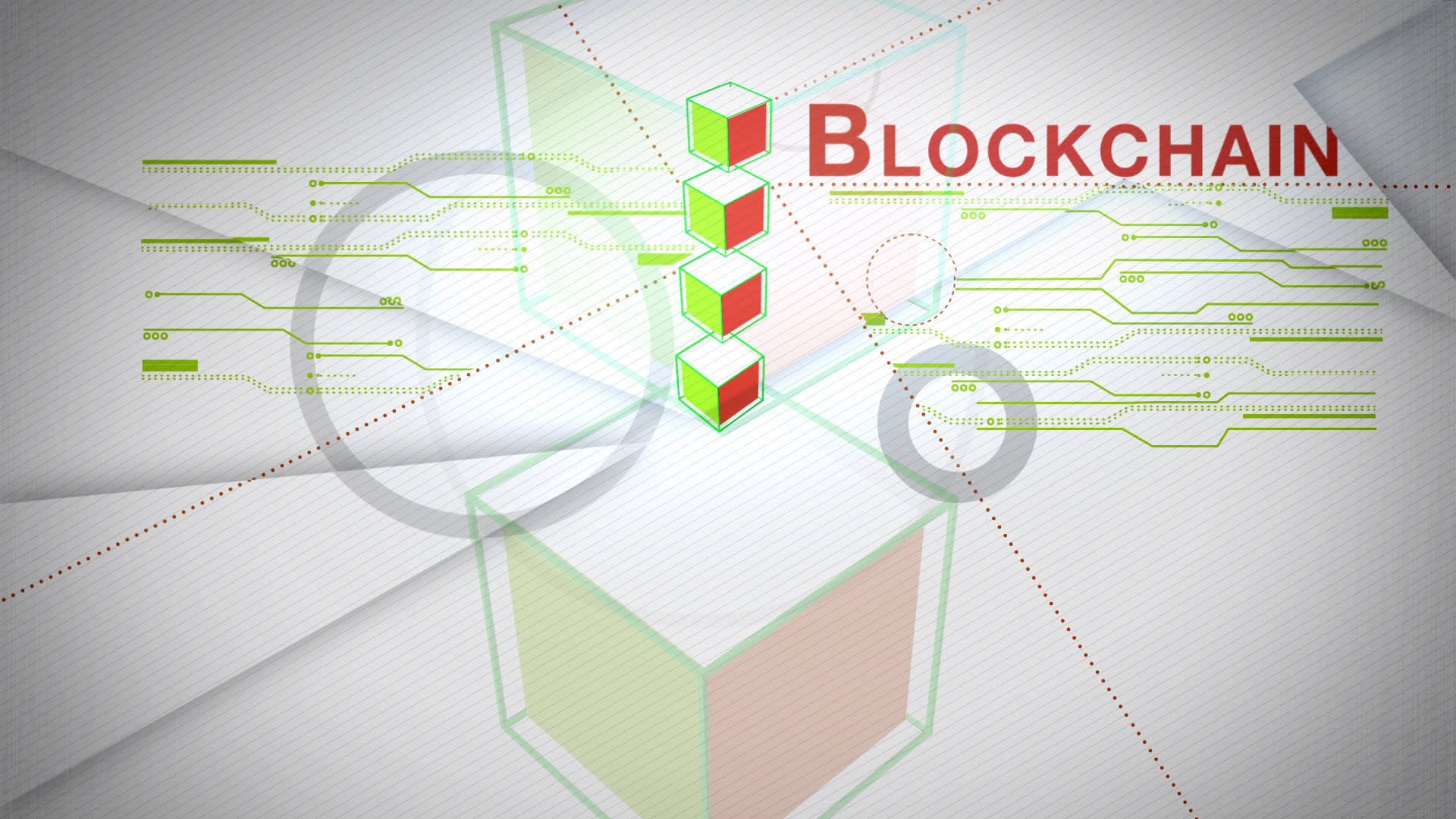Introduction
Welcome to the world of blockchain technology, where decentralization, transparency, and immutability are the pillars of a revolutionary digital ecosystem. From its inception with Bitcoin, blockchain has rapidly evolved into a powerful tool with applications in various industries, including finance, supply chain management, healthcare, and more. If you’ve ever wondered what it takes to create your own blockchain network, this article is for you.
A blockchain is essentially a distributed ledger that records transactions across multiple computers or nodes. Each transaction is stored in a block, which is linked to the previous block, forming a chain. What sets blockchain apart is its decentralized nature, where no central authority governs the network. Instead, consensus algorithms ensure trust and agreement among participants.
The benefits of creating your own blockchain network are numerous. Firstly, it gives you the opportunity to build a secure and transparent system tailored to your specific needs. By leveraging the power of blockchain, you can increase efficiency, reduce costs, and eliminate intermediaries. Moreover, owning a blockchain network opens doors to innovation, allowing you to explore cutting-edge technologies such as smart contracts and decentralized applications (DApps).
However, before diving into the process of creating your own blockchain network, it’s crucial to choose the right blockchain platform. There are several options available, including Ethereum, Hyperledger Fabric, and Corda, each with its own strengths and use cases. Consider factors such as programming language support, scalability, and community support in making your decision.
In the next sections, we will explore the step-by-step process of setting up and deploying your own blockchain network. From defining network rules to designing the block structure and implementing smart contracts, we’ll cover it all. So buckle up and get ready to embark on an exciting journey into the world of blockchain technology!
What is a Blockchain?
A blockchain is a decentralized, distributed ledger that allows multiple parties to record and store information in a secure and transparent manner. It is the underlying technology behind cryptocurrencies like Bitcoin, but its applications extend far beyond digital currencies.
At its core, a blockchain is a chain of blocks, where each block contains a set of transactions. These transactions are validated by network participants, known as nodes, through a consensus mechanism. Once validated, the block is added to the chain and becomes a permanent part of the ledger.
The decentralized nature of a blockchain ensures that no single entity has control over the network. Instead, information is stored and verified across multiple nodes, making it highly resistant to manipulation or tampering. This transparency and immutability make blockchains ideal for applications requiring trust and security.
One of the key features of a blockchain is its ability to create a permanent and auditable record of transactions. Once a block is added to the chain, it cannot be altered without also changing subsequent blocks. This makes it virtually impossible to tamper with the data stored on the blockchain, providing a high level of integrity and trust.
Another important aspect of a blockchain is its use of cryptographic algorithms. These algorithms ensure the security of the data stored on the blockchain by encrypting it and verifying its authenticity. This cryptographic protection ensures the privacy and security of transactions, making blockchains suitable for applications where sensitive information is involved.
In addition to cryptocurrencies, blockchains can be used for a wide range of applications. They can be used to track and verify the provenance of goods in supply chains, enable peer-to-peer lending and crowdfunding, facilitate transparent voting systems, and much more. The decentralized nature of blockchains removes the need for intermediaries, reduces costs, and enhances efficiency.
Overall, a blockchain is a powerful tool for creating secure, transparent, and decentralized systems. Its ability to store and validate data across multiple nodes, coupled with cryptographic protection, makes it an ideal choice for a wide range of applications. Understanding the fundamentals of blockchain technology is crucial in order to harness its full potential and explore the numerous possibilities it offers.
Benefits of Creating Your Own Blockchain Network
Creating your own blockchain network offers a plethora of benefits that can revolutionize how businesses operate and interact. Here are some key advantages:
- Decentralization: One of the fundamental advantages of blockchain technology is its decentralized nature. Unlike traditional centralized systems, where a single authority controls the network, a blockchain network is distributed across multiple nodes. This decentralization ensures that no single entity has complete control and enhances transparency and trust among participants.
- Transparency and Immutability: Blockchain networks provide a transparent and immutable record of transactions. Once a transaction is added to a block and validated by the network, it becomes a permanent and tamper-proof part of the blockchain. This transparency and immutability eliminate the need for intermediaries, reduce the likelihood of fraud, and increase the level of trust among participants.
- Security: Security is a critical aspect of any digital system, and blockchain networks excel in this area. The cryptographic algorithms used in blockchains ensure the encryption and verification of data, making it highly secure. Additionally, the decentralized nature of blockchain networks makes them less vulnerable to single points of failure and increases their resilience to cyber attacks.
- Efficiency and Cost Reduction: Blockchain networks streamline processes and reduce costs by eliminating intermediaries and automating trust. By cutting down on manual processes and paperwork, businesses can achieve greater operational efficiency. Additionally, blockchain networks eliminate the need for third-party verification, reducing costs associated with intermediaries and middlemen.
- Innovation and Customization: Creating your own blockchain network opens up a world of innovation and customization. You have the freedom to tailor the network to your specific requirements and explore cutting-edge technologies such as smart contracts and decentralized applications (DApps). This allows you to create novel solutions and drive innovation in your industry.
- Enhanced Data Integrity: A blockchain network ensures the integrity of data stored within it. As transactions are recorded on the blockchain, they are linked to previous blocks, creating a chain of information. This chaining mechanism makes it practically impossible to alter or delete past transactions without consensus from the network. This makes blockchain networks highly reliable for storing critical data, as it ensures the integrity and immutability of information.
These benefits highlight the transformative potential of creating your own blockchain network. By leveraging blockchain technology, businesses can streamline processes, enhance trust and security, reduce costs, and drive innovation. It is important to thoroughly assess your specific needs and objectives when creating a blockchain network to fully harness these advantages and realize the potential of this revolutionary technology.
Choosing the Right Blockchain Platform
When it comes to creating your own blockchain network, choosing the right blockchain platform is a crucial step. There are several factors to consider in order to select the platform that aligns with your needs and requirements. Here are some key considerations to help you make an informed decision:
- Use Case: Understand the specific use case and requirements of your blockchain network. Different platforms are designed for different purposes, such as financial transactions, supply chain management, healthcare, or decentralized applications (DApps). Choose a platform that offers the necessary features, functionality, and support for your specific use case.
- Scalability: Consider the scalability of the blockchain platform. As your network grows, it is important to ensure that the platform can handle increased transaction volume without compromising performance. Look for platforms that offer scalability solutions such as sharding or layer 2 protocols.
- Programming Language: Evaluate the programming language support of the blockchain platform. This is particularly important if you plan on developing smart contracts or DApps on the platform. Ensure that the platform supports the programming languages you or your development team are comfortable with, to facilitate smooth and efficient development.
- Community and Support: Assess the size and activity of the platform’s community. A vibrant and active community indicates ongoing development, updates, and support. A strong community can provide valuable resources, documentation, and forums for troubleshooting and collaboration.
- Security: Security is a critical aspect of any blockchain platform. Evaluate the platform’s security features, track record, and the measures it takes to protect against potential vulnerabilities or attacks. Look for platforms that have undergone rigorous security audits and have a strong focus on ensuring the safety of the network and its participants.
- Interoperability: Consider the interoperability of the blockchain platform. If you plan to integrate your network with existing systems or other blockchain networks, it is important to choose a platform that offers interoperability features and compatibility with other protocols.
- Governance Model: Evaluate the governance model of the blockchain platform. Some platforms have a more decentralized governance structure where decisions are made collectively by network participants, while others may have a more centralized governance model. Understand the implications of the platform’s governance model and how it aligns with your goals and values.
By carefully considering these factors and conducting thorough research, you can choose the blockchain platform that best suits your needs. Ethereum, Hyperledger Fabric, Corda, and many other platforms offer unique features and functionalities. Take the time to evaluate pros and cons, consult with experts, and select the platform that aligns with your goals, use case, and technical requirements. Choosing the right blockchain platform is a crucial step towards successfully creating and deploying your own blockchain network.
Setting Up the Blockchain Network
Once you have chosen the right blockchain platform, it’s time to set up your own blockchain network. This involves configuring the network, deploying the necessary infrastructure, and establishing the initial network participants. Here are the key steps involved in setting up a blockchain network:
- Network Architecture: Determine the architecture of your network. Will it be a public network accessible to anyone, a private network limited to specific participants, or a consortium network governed by a group of organizations? Define the network structure based on your requirements.
- Infrastructure Deployment: Set up the necessary infrastructure to support your blockchain network. This includes deploying the required hardware, servers, and network nodes. Ensure that the infrastructure is scalable, secure, and reliable to handle the anticipated network traffic.
- Node Setup: Configure the network nodes that will participate in the blockchain network. Nodes can be divided into different roles, such as validators, miners, or full nodes, depending on the platform and network requirements. Set up the nodes and establish communication channels between them.
- Consensus Mechanism: Determine the consensus mechanism for your blockchain network. Consensus mechanisms, such as Proof of Work (PoW), Proof of Stake (PoS), or Practical Byzantine Fault Tolerance (PBFT), ensure agreement among network participants. Choose a consensus mechanism that aligns with your network goals and resource considerations.
- Network Configuration: Configure the parameters of your blockchain network, such as block size, transaction fees, and network rules. Define the network governance model, including decision-making processes and rules for adding or removing participants from the network.
- Identity and Access Management: Implement identity and access management processes to ensure secure and authorized participation in the blockchain network. Use cryptographic techniques to verify the identity of network participants and control access to sensitive data or network operations.
- Integration with External Systems: If your network needs to interact with external systems or applications, consider the necessary integrations. This may involve integrating with existing databases, APIs, or other blockchain networks to facilitate data exchange and interoperability.
This initial setup phase of the blockchain network is crucial for establishing a solid foundation. Pay attention to the network architecture, infrastructure, and governance rules to ensure the long-term success and scalability of your blockchain network. It is also important to thoroughly test the setup and address any potential issues before moving on to the next steps of defining network rules, designing the block structure, and implementing smart contracts.
Defining the Network Rules and Consensus Mechanism
Defining the network rules and consensus mechanism is a crucial step in creating your own blockchain network. These rules dictate how the network operates, how transactions are validated, and how consensus is achieved among network participants. Here are the key aspects to consider when defining the network rules and consensus mechanism:
- Transaction Validation: Determine how transactions are validated in your blockchain network. This can be achieved through various mechanisms, such as proof of work (PoW), where participants compete to solve complex mathematical puzzles to validate transactions, or proof of stake (PoS), where validators are chosen based on the number of tokens they hold. Choose a validation mechanism that aligns with your network’s goals, security requirements, and scalability considerations.
- Block Confirmation: Decide on the number of block confirmations required before a transaction is considered final. This ensures that transactions cannot be easily reversed or tampered with. Depending on the platform and the level of security required, you can set the number of confirmations to a specific value, considering factors such as network speed, decentralization, and the sensitivity of the data being recorded.
- Consensus Algorithm: Select the consensus algorithm that will govern your blockchain network. Consensus algorithms ensure that all participants agree on the state of the network and the validity of transactions. Popular consensus algorithms include Byzantine Fault Tolerance (BFT), Practical Byzantine Fault Tolerance (PBFT), and Delegated Proof of Stake (DPoS). Evaluate the strengths and limitations of each algorithm and choose the one that aligns with your network’s requirements.
- Network Governance: Define the governance model for your blockchain network. Determine how decisions are made, such as protocol upgrades, adding or removing network participants, or modifying network parameters. Consider whether the governance model will be decentralized, with decisions made by all participants in a democratic manner, or if a specific entity will have more decision-making power.
- Network Rules and Policies: Establish the rules and policies that govern how the network operates. This includes parameters such as block size, transaction fees, reward distribution, and network performance guidelines. Define the guidelines that participants must adhere to in order to maintain the integrity and efficiency of the network.
- Network Upgrades: Plan for network upgrades and protocol improvements. As the blockchain ecosystem evolves, it is essential to have a process in place for implementing upgrades while maintaining compatibility and minimizing disruptions. Consider establishing a protocol for proposing, testing, and implementing changes to ensure the long-term viability and adaptability of your blockchain network.
Defining the network rules and consensus mechanism requires careful consideration of your network’s goals, security requirements, scalability, and governance preferences. Collaborate with stakeholders, experts, and community members to ensure that the selected rules and mechanisms align with the vision and objectives of your blockchain network. Additionally, it is crucial to document and communicate these rules clearly to all participants to ensure a shared understanding of how the network operates.
Designing the Block Structure and Data Schema
Designing the block structure and data schema is a critical aspect of creating a successful blockchain network. The block structure determines how transactions are organized and linked within the blockchain, while the data schema defines the format and structure of the information stored in each block. Here are key considerations for designing the block structure and data schema:
- Block Header: Determine the components that make up the block header, such as a timestamp, a unique identifier, the previous block’s hash, and any additional metadata required for network management or consensus. The block header plays a crucial role in ensuring the integrity and chain of blocks within the network.
- Transaction Format: Define the format and structure of transactions within the blockchain. Determine the necessary components, such as sender and receiver addresses, transaction amount, and any additional data or signatures required for transaction validation. Consider the needs of your specific use case and the data required for proper functioning of your network.
- Data Schema: Design the schema for the data fields within each block to ensure consistency and efficient storage. Determine the types of data to be stored, such as financial transactions, document hashes, or other relevant information. Consider the size, encoding, and compression techniques to optimize storage and retrieval efficiency.
- Indexed Data: Consider which data fields need to be indexed for easier and faster search within the blockchain. By indexing certain data fields, you can improve the efficiency of transactions and data retrieval, particularly in situations where searching by specific criteria is common.
- Data Consistency and Validation: Define the rules and verification mechanisms for ensuring data consistency and validation. This may include implementing cryptographic hashes, digital signatures, or other data integrity measures to maintain the accuracy and trustworthiness of the information stored within the blockchain.
- Privacy and Confidentiality: Determine how to handle privacy and confidentiality within the blockchain network. Consider whether certain data fields or transactions need to be encrypted or made visible only to specific participants. Explore techniques such as zero-knowledge proofs or private transactions to enhance privacy while still maintaining necessary transparency and immutability.
- Future Scalability: Anticipate future scalability needs and design the block structure and data schema with this in mind. Consider factors such as the potential increase in transaction volume, additional data fields, or future network upgrades. By designing for scalability, you can avoid potential bottlenecks and ensure the smooth growth of your blockchain network.
Collaborate with experts and developers who are well-versed in data modeling and blockchain technology to ensure a well-designed and efficient block structure and data schema. Regularly review and adapt the design as your network evolves and new requirements emerge. By carefully designing the block structure and data schema, you can create a robust and scalable blockchain network that effectively captures and maintains the integrity of the data it encompasses.
Implementing Smart Contracts and DApps
One of the most exciting aspects of creating your own blockchain network is the ability to implement smart contracts and decentralized applications (DApps). Smart contracts are self-executing contracts with predefined rules and conditions, while DApps are decentralized applications that leverage the blockchain network for their operation. Here are key steps for implementing smart contracts and DApps:
- Define Use Cases: Identify the specific use cases for which you would like to implement smart contracts and DApps. Smart contracts can automate and enforce the execution of agreements, while DApps can provide decentralized solutions for various industries, such as finance, supply chain, or healthcare. Clearly define the problem you are addressing and how smart contracts or DApps can provide a solution.
- Choose the Right Development Tools: Select the appropriate development tools and programming languages for implementing smart contracts and DApps on your chosen blockchain platform. Solidity is a popular programming language for writing smart contracts on platforms like Ethereum. Ensure you have a development environment that provides the necessary frameworks, libraries, and testing tools.
- Design the Smart Contract Architecture: Plan the architecture of your smart contracts. Define the different roles, functions, and variables required within your contracts. Consider how the interaction between smart contracts and external systems or oracles will be handled. Ensure that the architecture is efficient, secure, and scalable to accommodate future enhancements or updates.
- Code and Test: Implement the smart contracts and DApps according to the defined architecture and specification. Write the code for the smart contract logic, including functions, events, and data structures. Thoroughly test your smart contracts and DApps to identify and resolve any bugs or vulnerabilities before deployment. Proper testing is essential to ensure the security and functionality of your smart contracts.
- Deploy on the Blockchain: Deploy your smart contracts and DApps on the blockchain network of your choice. This involves broadcasting the code and associated data to the network and initiating the contract deployment process. Take into account gas fees and other network-specific considerations when deploying your smart contracts. Ensure that the deployment is successful and that the contracts are functioning as intended.
- Monitor and Maintain: Regularly monitor the performance and functionality of your smart contracts and DApps. Monitor gas usage, contract events, and user interactions to identify potential issues or optimizations. Maintain and update your smart contracts when required, ensuring backward compatibility and maintaining a smooth user experience.
- Engage the Community: Foster engagement and participation from the community surrounding your smart contracts and DApps. Encourage developers and users to provide feedback, report issues, and suggest improvements. Leverage the power of an active community to iteratively refine and enhance your smart contracts and DApps.
By implementing smart contracts and DApps, you can automate processes, eliminate intermediaries, and create decentralized applications that provide transparent and secure solutions. Engage with blockchain developers or development teams experienced in implementing smart contracts and DApps to ensure a smooth and efficient development process. Regularly update and improve your smart contracts and DApps to meet the evolving needs of your users and ecosystem.
Testing and Deploying Your Blockchain Network
Once you have developed your blockchain network, it’s crucial to thoroughly test and deploy it to ensure its reliability, security, and functionality. Testing and deploying your blockchain network involves several critical steps to ensure its successful operation. Here are key considerations for testing and deploying your blockchain network:
- Unit Testing: Conduct unit tests on individual components of your blockchain network, including smart contracts, consensus algorithms, and other functionalities. This helps identify any bugs or issues within specific components and allows you to fix them early in the development process.
- Integration Testing: Perform integration testing to ensure that the various components of your blockchain network work seamlessly together. Test the interaction between nodes, smart contracts, and other network functionalities to detect any potential conflicts or malfunctions.
- Security Audits: Engage third-party security firms to conduct comprehensive security audits of your blockchain network. These audits can identify vulnerabilities or weaknesses in the network’s architecture, smart contracts, and other components. Address any security issues to ensure the network is robust and resistant to attacks.
- Performance Testing: Simulate various network conditions and stress test your blockchain network to assess its performance and scalability. Measure transaction throughput, response times, and network latency under different loads, ensuring that the network can handle increased demands without compromising efficiency or stability.
- Consensus Algorithm Testing: Test the consensus algorithm of your blockchain network under different scenarios and conditions. Ensure that the consensus mechanism achieves the desired level of security, fault-tolerance, and agreement among network participants. Validate the consensus process and evaluate its resistance to potential attacks.
- Documentation and User Guides: Prepare detailed documentation and user guides to make it easier for network participants and developers to understand and interact with your blockchain network. This documentation should include information on how to connect to the network, participate in consensus, deploy smart contracts, and any specific rules or requirements unique to your network.
- Deployment Strategy: Plan your deployment strategy carefully. Consider factors such as network scalability, user onboarding, and potential downtime during the deployment process. Implement a well-defined deployment plan and ensure that all network participants are prepared for the transition to the live network.
- Continuous Monitoring: Implement a robust monitoring system to continuously monitor the live network for performance, security, and operational issues. Monitor network nodes, transaction volumes, latency, and other key metrics to promptly detect and address any abnormalities or bottlenecks.
- Community Engagement: Engage with the community and encourage users, developers, and stakeholders to provide feedback and report issues. Foster an open and collaborative environment to address concerns and iterate on the network’s design and functionality.
Testing and deploying your blockchain network requires careful planning, meticulous testing, and clear documentation. By following these best practices and taking the necessary steps to ensure the reliability, security, and performance of your network, you can confidently bring your blockchain network to life and provide a trustworthy and efficient platform for users and stakeholders.
Maintaining and Upgrading the Network
Maintaining and upgrading your blockchain network is essential to ensure its long-term viability, security, and efficiency. As the blockchain ecosystem evolves and new challenges arise, it’s crucial to actively maintain and upgrade your network to stay ahead. Here are key considerations for maintaining and upgrading your blockchain network:
- Network Monitoring: Continuously monitor the performance and health of your blockchain network. Implement a robust monitoring system that tracks key metrics such as transaction throughput, block confirmation times, and network node availability. Regularly analyze this data to identify potential issues and address them proactively.
- Software and Security Updates: Stay up to date with software upgrades and security patches provided by the blockchain platform you are using. Regularly update your network’s software to benefit from bug fixes, performance improvements, and enhanced security measures. Keep an eye on security advisories and proactively address any vulnerabilities to maintain the integrity of your network.
- Community Engagement: Foster a strong and engaged community around your blockchain network. Encourage users, developers, and stakeholders to actively participate in discussions, provide feedback, and report any issues. Engage with the community to gather valuable insights, address concerns, and prioritize upgrades or enhancements based on their needs and requirements.
- Scalability Strategies: Continually assess your network’s scalability and explore strategies to ensure that it can handle increasing transaction volumes and user demands. Consider implementing scaling solutions such as sharding, layer 2 protocols, or off-chain channels. Regularly evaluate the scalability needs of your network and plan for upgrades or optimizations accordingly.
- Governance and Consensus Evolution: Maintain an effective governance model that enables the network to evolve and adapt over time. Regularly review and refine the governance processes, including decision-making mechanisms and participation criteria. Encourage active participation from network participants in shaping the evolution of the network’s consensus rules and operational policies.
- Interoperability and Integration: Explore opportunities for interoperability and integration with other blockchain networks or external systems. Identify potential partnerships or collaborations that can enhance the functionality and reach of your network. Determine the necessary standards and protocols to enable seamless interoperability with other blockchain networks or legacy systems.
- Educational Resources: Provide educational resources and support for developers and users who are interacting with your network. Offer documentation, tutorials, and sample code to help users understand the concepts and technicalities of your blockchain network. Create a supportive environment where developers can build upon your network and contribute to its growth.
- Regular Audits: Conduct regular audits of your blockchain network to ensure its integrity, security, and compliance with relevant standards. Engage third-party auditors to evaluate the network’s architecture, smart contracts, and any sensitive data stored within the network. Address any issues identified during the auditing process promptly to maintain the trust of network participants.
- Upgrade Roadmap: Plan and communicate a clear roadmap for future upgrades and enhancements to your network. Communicate the upgrade timeline, new features, and improvements to stakeholders and users in advance. Gather feedback and engage with the community to ensure that upgrades align with the evolving needs and expectations of your network’s participants.
Maintaining and upgrading your blockchain network requires ongoing commitment and active participation. Stay vigilant, engage with your community, and leverage the expertise of professionals in the blockchain space. By continuously improving and adapting your network, you can ensure its longevity and provide a resilient and valuable platform for a wide range of applications and users.
Conclusion
Creating your own blockchain network not only opens up a world of possibilities but also empowers you to build decentralized, transparent, and secure solutions tailored to your specific needs. Throughout this journey, you have learned about the fundamental concepts of blockchain technology, the benefits of having your own network, and the importance of choosing the right blockchain platform.
By following the steps outlined in this article, including setting up the network, defining network rules and consensus mechanisms, designing the block structure and data schema, implementing smart contracts and DApps, and thoroughly testing and deploying your network, you can successfully create your own blockchain network.
Maintaining and upgrading your network is an ongoing process that requires robust monitoring, addressing security concerns, engaging with the community, and staying informed about the latest trends and advancements in the blockchain industry. By taking proactive measures to maintain and upgrade your network, you can ensure its long-term sustainability and adaptability.
Creating your own blockchain network is a journey that requires a deep understanding of technology, careful planning, and continuous learning. It opens the doors to innovation, automation, and new business models that were previously unimaginable. Embrace the opportunities that blockchain technology offers, stay connected with the vibrant blockchain community, and unleash the power of your own blockchain network.

























